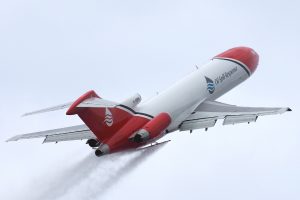Technology has advanced at an unprecedented pace over the last decade. From our handheld devices to design protocols for aircraft, various emerging trends in the aerospace industry influence our approach to modern engineering.
With this blog, we are going to pinpoint the emerging trends in the aerospace industry and what they mean for us.
The Aerospace Industry Embraces Sustainability
It is no secret that the aerospace industry has a bad reputation when it comes to contributing to climate change. The industry alone emits close to one billion metric tons of carbon dioxide annually. These figures are projected to triple by 2050 if sustainable measures are not implemented.
As travellers become more environmentally conscious there is increasing pressure for the sector to reduce its carbon footprint.
Aircraft manufacturers are striving to achieve fuel efficiency in their designs, in a bid to reduce emissions. Approaches to do so include enhancing engine designs, improving aerodynamics, exploring the use of lightweight materials and using advanced coatings.
Through advanced design software, like Fusion 360 or Siemen NX, aircraft manufacturers can simulate the performance of aircraft designs and evaluate fuel efficiency. They can then estimate aircraft emissions over their lifespan.
It is not only aircraft that need to be more efficient but also the manufacturing processes and supply chains. Technological innovations have allowed us to transition to a more sustainable way of operating. For example, solar energy and battery storage systems power Airframe Designs headquarters, assisting us in our mission towards Net Zero.
With an ISO 14001 certification, Airframe Designs is recognised for our NQA-certified environmental management system.

Artificial Intelligence In The Aerospace Industry
The predominant use of AI in the aerospace industry is to automate manual processes and eliminate the possibility of human error.
AI technologies provide insight into data by detecting new patterns. This optimises asset utilisation and fuel efficiency.
In terms of time management, AI can solve complex problems quicker than humans can and offer suitable outcomes. AI technology has been implemented for critical decision making during autonomous flight operations. It can also assist human pilots by controlling manned or unmanned manoeuvrability.
The aerospace industry also advances AI with the potential of what it can achieve. To what extent can AI manage the complexity of aircraft design and operations? Could AI solely be flying aircraft one day in the future?
Additive Manufacturing
Due to advances in 3D printing, additive manufacturing has become an increasingly important technology in the aerospace industry. The process allows aviation companies to leverage low-volume production in a cost-effective way.
By facilitating the rapid development of prototypes, additive manufacturing can reduce the likelihood of complications and has the potential to improve aircraft efficiency.
The freedom of additive manufacturing allows the aerospace industry to simplify the design process and experiment with methods for prototyping, tooling, and production, all while reducing costs.
Aerospace innovators are embracing additive manufacturing beyond the prototyping stage, looking for new ways to utilise this technology. Currently, Airframe Designs apply additive manufacturing to polymer parts, prototypes, trial-fit mock-ups, and lightweight tooling.
At Airframe Designs, we have actively asserted ourselves among industry specialists in additive manufacturing, Universities, and Research Centres, to bring forth technological innovation. These partnerships have expanded our capabilities in providing technologies that benefit our customers.
Our advanced manufacturing facility features FDM printers and ancillary equipment, including two Stratasys Fortus 450mc machines to produce ultra polymer materials such as ULTEM 9085.
The Aerospace Industry Leans Into Digitisation
By integrating digital technologies across internal operations, aerospace companies can stay agile. Manufacturers can manage supply chain operations more efficiently and improve aircraft and rotorcraft systems.
Digitisation simplifies communication amongst stakeholders and eliminates data silos between internal systems. Aerospace industry leaders are recognising data-intensive solutions that digitisation offers, such as advanced analytics and digital threads.
The aerospace industry can proactively detect potential issues by leveraging advanced analytics. Therefore, downtime is minimised for aircraft, as predictive algorithms offer immediate analysis for maintenance concerns, leading to cost reductions. Aircraft safety is overall optimised, and schedules are not disrupted.
In the design process at Airframe Designs, we have implemented legacy data digitisation, which utilises VERISURF software for converting scanned data-point clouds into usable CAD models and surfaces.

Advanced Satellite Technology
With a growing need for geospatial intelligence and satellite imagery, the aerospace industry is expecting to see an increase in satellite launches.
While satellite launches already make up most commercial space activities, satellite miniaturisation enables the ease of launch, which will expectedly increase the scale of activity.
The demand for global connectivity, i.e. the internet, drives a need for satellite-based communication systems. With the assistance of additive manufacturing, satellite production and maintenance are simplified.
Airframe Designs Allign With Emerging Trends In The Aerospace Industry
At Airframe Designs, we make it our business to be ‘in the know’ about emerging trends in the aerospace industry. Whether it’s aircraft, rotorcraft or unmanned platforms, we remain ahead of the curve.
Our extensive capabilities and advanced innovations justify our recognition as a leader in the aerospace industry.
If you are interested in learning more about how our expertise could upgrade your project, or have any questions, then please get in touch.

